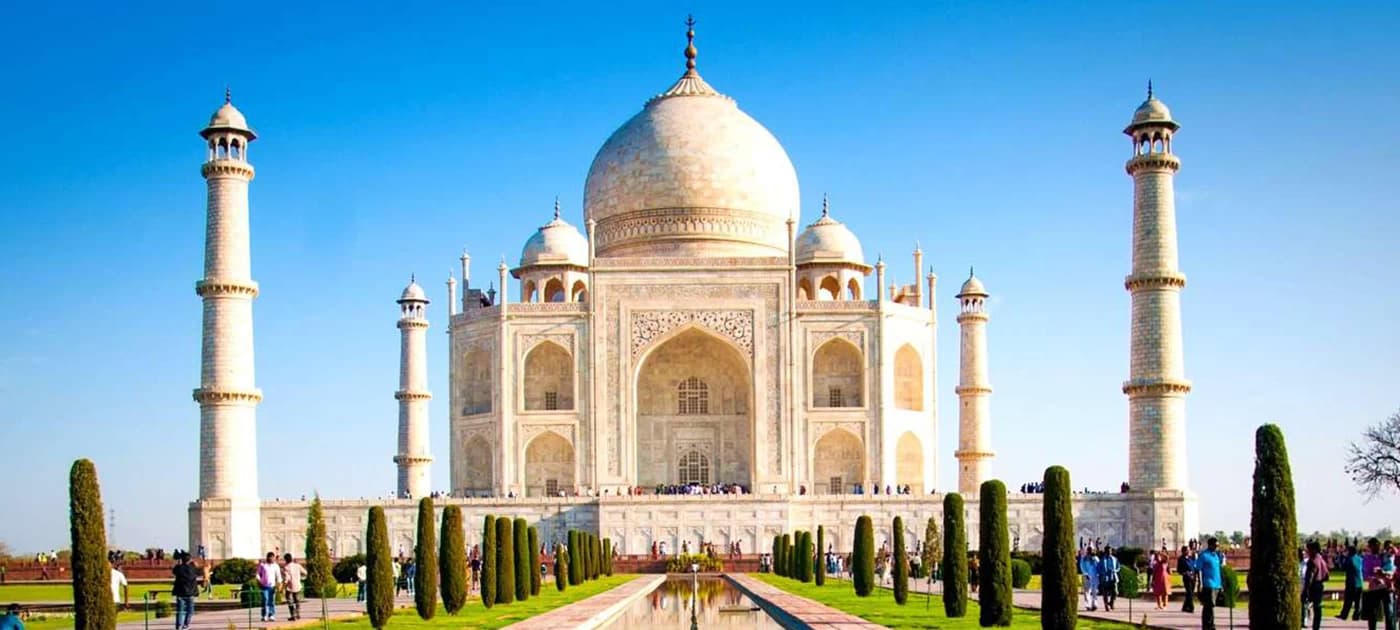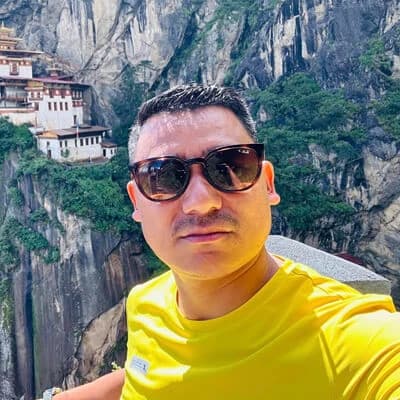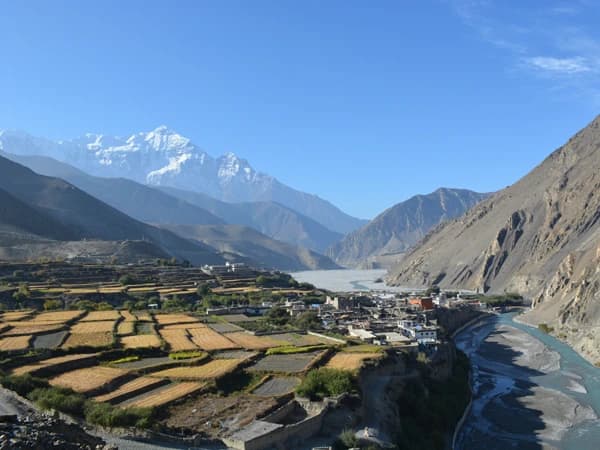Tourism in India is booming right now, and justifiably so. Attracting history buffs, thrill-seekers, vagabonds, curious explorers, and travelers from all walks of life, India has something for everyone. At first it can be intimidating – full of chaos, noise, discomfort, stress, etc. But hey, who said culture shock is a bad thing? Before you know it, you’re reminded that India is home to the world’s most stunning heritage sites (i.e. Taj Mahal), most welcoming people, and tastiest foods. Traveling in India is not for the faint of heart, but rest assured that a trip to this unique country will change your outlook on the world. The Golden Triangle of East Himalaya Tour is perfect for anyone who would like to get a full taste of India in a comfortable, convenient, and exciting way.
India Golden Triangle of East Himalaya Tour Travel Guide
Perfect Introduction to India
It would take lifetimes to visit every one of India’s greatest sites, but luckily there is a second-best option for those who just have just two weeks in India and want to make the most of it. There is truly no better way to get a well-rounded taste of Indian culture than through the Golden Triangle of East Himalaya Tour. You’ll visit the more mainstream Golden Triangle destinations as well as a few stops in the peaceful region of northeast India. Indeed, the Golden Triangle is one of the most popular route for tourists, but still, the destinations will not be as crowded as you might expect. The tour reveals the magnificent blend of both the ancient and modern aspects of India, in terms of culture, daily lifestyle, and architecture.
You’ll visit five main cities on the tour: Delhi (Indian’s capital), Agra(home of the Taj Mahal), Jaipur (‘the Pink City’), Darjeeling (famed tea-tasting destination), and Sikkim (a scenic Buddhist state nestled in the mountains). Find yourself in a perpetual state of awe in each destination. If there’s one constant in India, it’s that it will always surprise you.
Delhi
With a population of roughly 30 million, it’s easy to feel overwhelmed in Delhi.More often than not, though, that feeling is outweighed by admiration and fascination. Wherever you are in Delhi, you’re never more than a few minutes away from a famous historical site. In a glance, you can experience ancient, medieval, and modern India. Though Delhi has modernized, adopting trendy nightclubs, lavish hotels, and towering skyscrapers, the magnificent dated relics have not lost any of their charm.
As Delhi used to be the capital of the Mughal Empire, many of the city’s amazing structural revolve around Mughal architecture. QutubMinar is one example. Constructed in 1193 AD, the tower was erected to signify Muslim dominance in Delhi. Also, we will check out the eloborate Mughal mausoleum of Humayun Tomb and Jama Masjid, one of the largest mosques in India, lying in the heart of Old Delhi.
Apart from the Mughal sites, you’ll visit India Gate – a memorial dedicated to those in the British Indian Army who lost their lives in the First World War. Also on the agenda are stops at President House, Lotus Temple, and a stimulating stroll with the bazaars of Old Delhi. Once you have experienced the hustle and bustle of Delhi, you’ll be prepared for a little slower pace in Jaipur.
Jaipur
Home to India’s most opulent forts and palaces, Jaipur is a must-see destination on your trip to India. Jaipur is the capital of Rajasthan and used to be the abode of the royal family that ruled the region. With courtyards, gardens and museums, there is no doubt that the sense of lavishness and royalty still exists in the city. Also known for its trademark color of buildings, Jaipur is often referred to as ‘the Pink City.’ Travel back in time while stopping at each historical destination. Amer Fort is the most notable destination in Jaipur. Built from marble and sandstone, this ostentatious palace provides a grand view over the city of Jaipur. You will also have a visit to the iconic Hawa Mahal that honestly must be seen in person to fully appreciate. Other highlights include visits to City Palace and JantarMantar. In between the more touristy stops, enjoy exploring the chaotic winding streets, which are vibrant and full of life. From Jaipur, you head west to see what is perhaps one of the most impressive man-made structures on the planet.
Agra
All the palaces and forts you will see in Delhi and Jaipur are incredible in their own way, but let’s be honest: the Taj Mahal takes the cake. It represents the legacy of the Mughal Empire, which at one point hoisted Agra as one of India’s most powerful cities. Constructed in in the 17th century by Shah Jahan (the fifth Mughal emperor), the Taj Mahal is said to be a true embodiment of love. It is one of the New Seven Wonders of the World. Speaking from experience, the beauty of this mausoleum cannot be understood in photographs. It very well possibly will make your jaw drop when you see it in real life. Getting there for the sunrise or sunset adds another level of beauty to this architectural wonder. After your visit to the Taj Mahal, check out some of the other underrated attractions in Agra, including Agra Fort and the red sandstone FatehpurSikri.
Darjeeling
After several busy days on the Golden Triangle segment of the tour, we head to the east Himalaya region to slow down, breathe the fresh air, and witness the incredible mountain views. It’s easy to spend days in Darjeeling, just sipping tea and enjoying the chill atmosphere. Surrounded by the gorgeous Himalayan peaks, like Kanchenjunga (8586 meters/28,169 feet), you’ll feel as if you’re in heaven on Earth. On the Golden Triangle of East Himalaya Tour, you visit the most famous spots in the hilltop town, but because there is just one full day here, if there is something special you would like to see, that can certainly be arranged.
First and foremost, you will visit the Happy Valley Tea Garden to try the world-famous Darjeeling tea – also called ‘the Champagne of teas.’ Said to be one of the finest teas in the world, just one cup of this tasty beverage will give you the energy needed for a full day of sightseeing. Then, take a joyride on the Toy Train along the Darjeeling Himalayan Railway (DHR) track. The steam powered locomotive carves around the ridges, and out the window are rolling green hills as far as the eye can see. It is not only a memorable experience for tourists, but the train itself is actually an UNESCO World Heritage Site.
After the scenic Toy Train ride, there are still lots of things to see around Darjeeling. Worth visiting is the Padam Naidu Zoological Park, where you can see the rare Red Panda, the Himalayan Black Bear and Royal Bengal Tiger. If you’re interested in Tibetan culture, you may want to check out the Tibetan Self Help Center, where refugees from Tibet make spectacular handmade clothes and crafts, which you can purchase to support their livelihood. Or, visit Dali Monastery, where monks and monks-to-be are seen drumming and chanting into the evening.
Another major highlight in Darjeeling is hiking up Tiger Hill for the sunrise view. Start your day seeing some of the world’s highest mountains become illuminated by the red-orange glow of the sun. If it’s a clear morning, you can see Mount Everest, Kanchenjunga, and Makula, the 1st, 3rd, and 5th highest peaks in the world. You can make a visit on the first full day in Darjeeling or in the morning before leaving forPelling. After a lovely time in Darjeeling, we make our last stop on the Golden Triangle of East Himalaya Tour in Sikkim.
Sikkim
At last, enter the secluded Buddhist kingdom of Sikkim. It wasn’t until 1975 that Sikkim officially became a state of India. It is bordered by the Tibet Autonomous Region of China to the north, Nepal on the west, Bhutan on the east, and West Bengal on the southern side. The fact that roughly 2/3 of the state’s land is mountains and 2/5 of the land is forested adds a lot of attraction to this already alluring place. Kanchenjunga (8586 meters/28,169 feet), of course, provides a stunning backdrop for the entire state. The cultural aspects of this state are just as intriguing as the natural ones. If you’re interested in Buddhism, you’ll definitely fall in love with Sikkim. If that’s to convince you to come to Sikkim, then wait until you hear about the agriculture here. In 2016, Sikkim became the first fully organic state in the world, in order to promote soil fertility, protection of environment and ecology, healthy living and decreasing the risk of health ailments.
The first stop on your Sikkim tour is Pelling, a charming little hillside town with one of the oldest monasteries in the region. Pemayangste Monastery was founded in 1705 and is the perfect place to indulge in some peaceful meditation. The typical Tibetan Buddhist architecture and snow-covered peaks in the distance create a scene that looks like it was taken from a movie.
On the road towards Gangtok, you’ll stop in Ravangla to check out Buddha Park. Here lies a lush a lush garden with a 130-foot (40 meter) statue of Buddha with a pristine chain of Himalayan peaks standing behind. From here, continue east to Gangtok, Sikkim’s beloved capital and largest city. Experience inner peace as you visit Rumtek Monastery, a huge monastic center that houses hundreds of monks of all ages. Stop at another tea plantation, meditate at Enchey Monastery, or shop at MG Marg, where you’ll find the best bars, restaurants, and spots to shop in Gangtok. After an exciting couple days in Sikkim, we head back to West Bengal for the last stop of the tour.
Kalimpong sits on a ridge high above the Teesta River, and is home to a mix of ethnic groups native to the Himalayas. It is a wonderful place to learn about the lifestyle of Nepalese, Indians, Tibetans, Sikkimese, and how British colonialism influenced the region. Stroll around Market Sqaure and try all the local delicacies. Kalimpong is, in fact, known for its local produce, including corn rice, millet, cardamom, ginger, turmeric, etc. You’ll enjoying spending a day in peace, reflecting on the tour before heading back home.In just less than two weeks, you will be amazed at what you’ll be able to see on the Golden Triangle of India Tour.
Best Time for the Golden Triangle of East Himalaya Tour
The great thing about the Golden Triangle of East Himalaya Tour is that it can be taken all throughout the year. That being said, the best time to take the tour is October to March, as they provide the most moderate weather and the clearest skies for mountain views.
Here’s a little bit about what to expect in each season:
Summer (April – June) is the hottest season in India, especially in the Golden Triangle. It is generally dry, fewer tourists come to India, and there are several festivals celebrated.Monsoon (July – September) brings torrential downpours on most days, but colorful landscapes and it is the time when there are fewer tourists.
Peak Season (October – March) tends to be the best time to take the Golden Triangle Tour. Festival season begins in October. Also, temperatures are most comfortable and precipitation likely won’t ruin any of the activities. In addition, clear skies make for stunning views in northeast India. The only drawback to peak season is that it brings more tourists.
Anytime is suitable for the Incredible India Golden Triangle of East Himalaya Tour, so whichever season works best for youis the one you should choose!
Why Choose Ashmita Trek & Tours
We consistently provide five-star quality tours to each client. Our philosophy is aimed not just to give you the best time in a specific place, but also to enrich your life and perhaps change the way you look at the world. We provide itineraries that are best suited for your style and preferences. When you travel with Ashmita Trek & Tours, you get what you pay for. There are no hidden costs or extra fees and our guides are top-notch. They are professional, experienced and have lead trips throughout India. We are particularly excited about our Golden Triangle Tour and we hope that you are too!You can travel with confidence when you join Ashmita Trek & Tours, so book your extraordinary India Golden Triangle Tour today!






